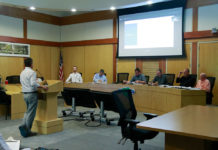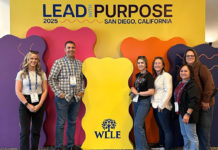There aren’t any large scale developments or big box store
proposals on the horizon for the city of Healdsburg, so some say
it’s a perfect time to re-evaluate how those types of projects are
vetted through the community and city officials before being
approved or denied.
A group called Community First has been studying a process used
by some other cities that considers a project’s impact on areas of
the community like healthcare, schools and small business at the
beginning stages of a proposal. Supporters say the process, called
a Community Impact Report (CIR), provides stakeholders and the
community with additional information about impacts a project may
have that wouldn’t otherwise be studied.
“A Community Impact Report is a tool which can provide the
decision makers, the developers, and Healdsburg citizens an early
opportunity to assess a proposed development’s impact on the social
and economic fabric of our community,” said Gail Jonas, who has
been a lead organizer of the Community First group.
Jonas said since many communities have dealt with the threat of
big box stores, most CIR ordinances are directed toward those
projects. But, she said, Healdsburg is unique. “We don’t appear to
be a target for a big box store but our commitment to fostering the
hospitality industry means we will face proposals for more large
resorts,” she said.
At a presentation during Monday evening’s City Council meeting,
CIR supporters often spoke of the more than three year process that
the Saggio Hills development took to go through the city process.
Some information, like the fiscal assessment, they said, wasn’t
available until late in the game.
Healdsburg resident Laura Tietz said the CIRs sounded like a
good idea.
“I like the idea of a broad spectrum of people getting together
and talking about an idea while it’s still an idea,” she said.
But others say Community Impact Reports add an unnecessary layer
of bureaucracy and a “one-size-fits-all” template to a potential
development.
Mel Amato, a longtime supporter of Saggio Hills spoke against
CIRs.
“Any wise developer is going to come in already prepared with
these details already defined and addressed,” he said. Amato also
questioned the template approach that is not practical for all
projects. “How big is a big project and how small is a small
project?” he asked.
Tony Korman, developing partner in Saggio Hills thinks
implementing a Community Impact Report ordinance will “add another
layer of bureaucracy, another layer of difficulty,” he said. “It
will further delay future projects.”
Both sides approached a divided city council Monday night and
neither side got completely what they wanted.
After councilmembers Mike McGuire and Jim Wood argued in favor
of creating a sub-committee to study a Community Impact Report
ordinance and Gary Plass and Tom Chambers argued against forming a
sub-committee without more information, Mayor Eric Ziedrich was
left with the deciding vote, and a compromise was not easy to come
by.
“I am trying to figure out if there is common ground here,”
Ziedrich said.
Plass questioned what would even be accomplished by creating
“this layer.”
“What exactly is the real reason this is being proposed? It
doesn’t accomplish anything other than another report that groups
are going to argue over and continue arguing over,” he said.
Meanwhile, McGuire argued that Healdsburg has always been a
trailblazer, leading the way with projects and implementing
ordinances that not many other cities had done.
“Healdsburg is about putting our community first,” he said.
McGuire said the Saggio Hills project should have taught the city a
lesson.
“Why did it take 26 meetings (to approve the project)?” he
asked. “We did not do our job of getting the information out to the
community first,” McGuire said.
Ultimately, the council agreed to schedule a special study
meeting to gather more information on CIRs, followed by a joint
study session with the Planning Commission, before any decision on
CIRs will be made.








